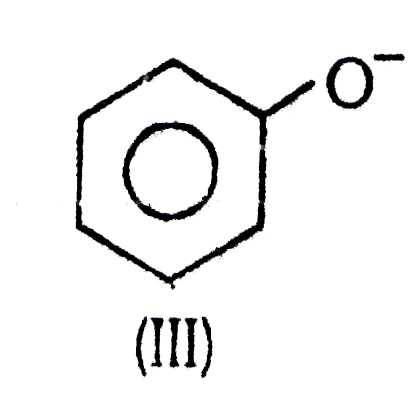The oxidation states of S atom in S4O6O2− from left to right respectively are
O−−O∣∣S∣∣O−S−S−O∣∣S∣∣O−O−
+6,0,0,+6
+3,+1,+1,+3
+5,0,0,+5
+4,+1,+1,+4
The correct Answer is:C
To determine the oxidation states of sulfur (S) atoms in the ion S4O6O2− from left to right, we can follow these steps:
Step 1: Understand the Structure
The given ion S4O6O2− consists of 4 sulfur atoms and 6 oxygen atoms. The overall charge of the ion is -2.
Step 2: Assign Oxidation States to Oxygen
In most compounds, oxygen has an oxidation state of -2. However, in this case, we have one oxygen atom that is part of the ion and carries a -1 charge. Thus, we can assign oxidation states to the oxygen atoms as follows:
- 5 oxygen atoms: -2 each
- 1 oxygen atom: -1
Step 3: Calculate Total Contribution of Oxygen
The total contribution of the oxygen atoms to the overall charge can be calculated as:
(5×−2)+(−1)=−10−1=−11
Step 4: Set Up the Equation for Sulfur
Let the oxidation states of the sulfur atoms be x1,x2,x3,x4. The total contribution from sulfur and oxygen must equal the overall charge of the ion (-2):
x1+x2+x3+x4−11=−2
This simplifies to:
x1+x2+x3+x4=9
Step 5: Analyze the Structure
From the structure of the ion, we can see that:
- The first sulfur atom (leftmost) is likely to be in a higher oxidation state due to its bonding with multiple oxygens.
- The middle sulfur atoms are likely to be in a lower oxidation state due to their bonding with each other and fewer oxygens.
- The last sulfur atom (rightmost) is also likely to be in a higher oxidation state similar to the first one.
Step 6: Assign Oxidation States
Based on the structure and the calculations:
1. The first sulfur atom S1 can be assigned an oxidation state of +5.
2. The second sulfur atom S2 is in a zero oxidation state (due to the non-metal bond).
3. The third sulfur atom S3 is also in a zero oxidation state.
4. The fourth sulfur atom S4 can be assigned an oxidation state of +5.
Thus, the oxidation states from left to right are:
- +5,0,0,+5
Final Answer
Therefore, the oxidation states of sulfur in S4O6O2− from left to right are:
+5, 0, 0, +5
The given ion S4O6O2− consists of 4 sulfur atoms and 6 oxygen atoms. The overall charge of the ion is -2.
In most compounds, oxygen has an oxidation state of -2. However, in this case, we have one oxygen atom that is part of the ion and carries a -1 charge. Thus, we can assign oxidation states to the oxygen atoms as follows:
- 5 oxygen atoms: -2 each
- 1 oxygen atom: -1
The total contribution of the oxygen atoms to the overall charge can be calculated as:
(5×−2)+(−1)=−10−1=−11
Let the oxidation states of the sulfur atoms be x1,x2,x3,x4. The total contribution from sulfur and oxygen must equal the overall charge of the ion (-2):
x1+x2+x3+x4−11=−2
This simplifies to:
x1+x2+x3+x4=9
From the structure of the ion, we can see that:
- The first sulfur atom (leftmost) is likely to be in a higher oxidation state due to its bonding with multiple oxygens.
- The middle sulfur atoms are likely to be in a lower oxidation state due to their bonding with each other and fewer oxygens.
- The last sulfur atom (rightmost) is also likely to be in a higher oxidation state similar to the first one.
Based on the structure and the calculations:
1. The first sulfur atom S1 can be assigned an oxidation state of +5.
2. The second sulfur atom S2 is in a zero oxidation state (due to the non-metal bond).
3. The third sulfur atom S3 is also in a zero oxidation state.
4. The fourth sulfur atom S4 can be assigned an oxidation state of +5.
- +5,0,0,+5
Therefore, the oxidation states of sulfur in S4O6O2− from left to right are:
+5, 0, 0, +5
Topper's Solved these Questions
- REDOX REACTIONSBOOK - AAKASH INSTITUTE ENGLISHCHAPTER - REDOX REACTIONSEXERCISE - Assignment (Section B) (Objective type Questions (one option is correct))
32 Videos
- REDOX REACTIONSBOOK - AAKASH INSTITUTE ENGLISHCHAPTER - REDOX REACTIONSEXERCISE - Assignment (Section C) (Objective type Questions (More than one option is correct))
18 Videos
- REDOX REACTIONSBOOK - AAKASH INSTITUTE ENGLISHCHAPTER - REDOX REACTIONSEXERCISE - Try Yourself
28 Videos
- PRINCIPLES OF QUALITATIVE ANALYSISBOOK - AAKASH INSTITUTE ENGLISHCHAPTER - PRINCIPLES OF QUALITATIVE ANALYSISEXERCISE - Assignment (SECTION H)
9 Videos
- SOLUTIONSBOOK - AAKASH INSTITUTE ENGLISHCHAPTER - SOLUTIONSEXERCISE - ASSIGMENT (SECTION-J) AAKASH CHALLENGERS QUESTIONS
10 Videos
Similar Questions
Knowledge Check
The IUPAC name of CH3−C∣CH3H−CH2−O∣∣C−Br is
A2-Methylbutanoyl bromideB2-Methylbutan-4-oyl bromideC1-Bromo-3-MethylbutanoneD3-Methylbutanoyl bromideThe IUPAC name of C∣BrH2−C∣CONH2H−O∣∣C−CH2−CH3is
A2-(Bromomethyl)-3-oxopentane carboxamideB1-Bromo-2-carbamoylpentan-3-oneC5-Bromo-4-carbamoylpentan-3-oneD2-(Bromomethyl)-3-oxopentanamideCH3−CH∣Br−CH2−O∣∣C−CH3N2HO(4),ϴOH−−−−−−−−−−−→Δ Product:
A B
B C
C D
D
Compare the acidities of amide ⎛⎜ ⎜⎝R−C∣∣O−NH2⎞⎟ ⎟⎠ and sulphonamide ⎛⎜ ⎜⎝R−O∣S∣∣O−NH2⎞⎟ ⎟⎠
View SolutionConsider the following anions.
(I) CF3−O∣∣S∣∣O−O− (II) C6H5−O∣∣S∣∣O−O− (III) (IV) CH3−O∣∣C−O−
(IV) CH3−O∣∣C−O−
When attached to sp3-hybridized carbon, their leaving group ability in nucleophilic substitution reactions decreases in the order
View SolutionThe order of acidic strength of the hydrogen atom (Hα,Hβ,Hγ) in the given molecule is :
CH3−CH∣Hβ−O∣∣C−CH∣Hγ−O∣∣C−CH2∣Hα
View SolutionIdentify and name the functional groups present in the following compounds.
(a) H−H∣C∣H−H∣C∣H−H∣C∣H−OH , (b) H−H∣C∣H−H∣C∣H−O∣∣C−OH
(c ) H−H∣C∣H−H∣C∣H−O∣∣C−H∣C∣H−H∣C∣H−H , (d) H−H∣C∣H−H∣C∣H−H∣C=H∣C−H
View SolutionWrite the IUPAC names of the compounds i-iv from their given structures.
C6H3−C5H2−O∣∣C4−C3H2−O∣∣C2−C1H3
View Solution
